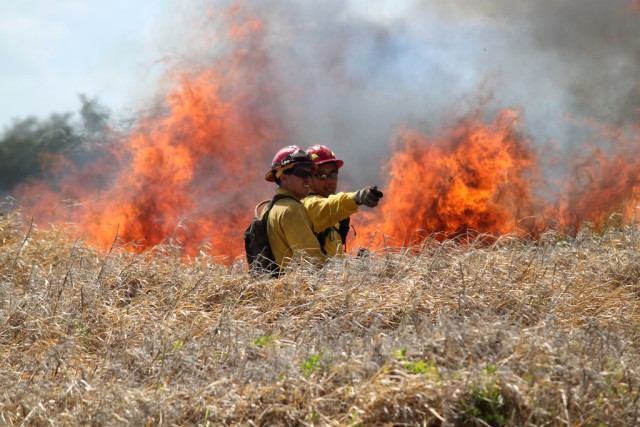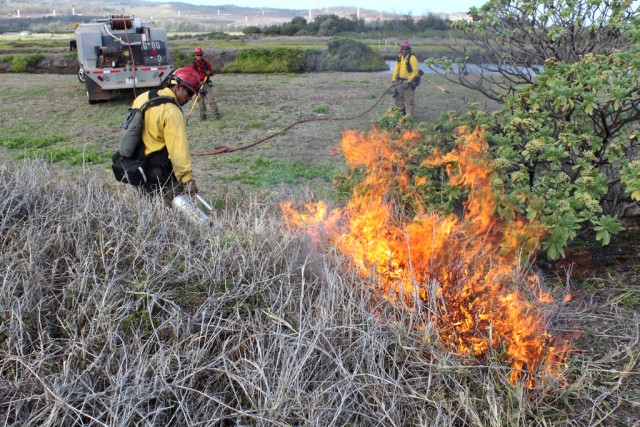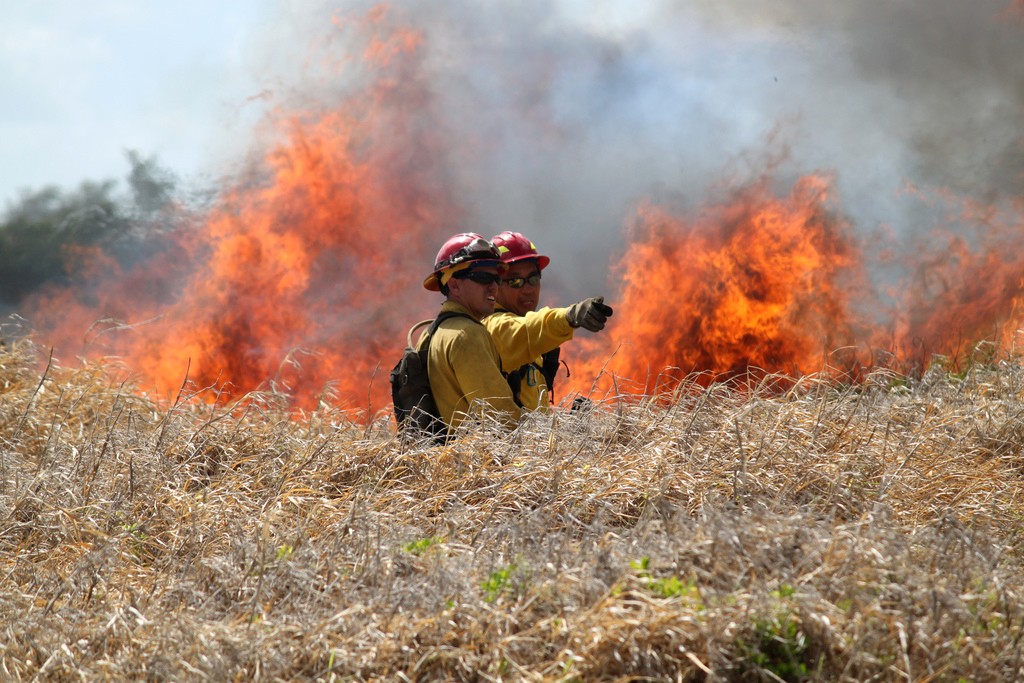SCHOFIELD BARRACKS, Hawaii -- The Army's wildland firefighters stationed here are more than average run-of-the-mill firefighters, if there were such a thing.
These civilian employees fill a critical niche in both the Army and Hawaii's fire prevention plan, and they protect the lives and property of residents, as well as endangered plants and wildlife in the forests.
They form the only fire crew within the State of Hawaii that is 100-percent committed to fighting wildland fires.
"Fighting field and forest fires requires a different approach from what is required when battling house fires in an urban environment," said Scott Yamasaki, U.S. Army Garrison-Hawaii's Wildland Fire Program manager. "Our guys come to the table with a variety of skills not normally found in a standard fire station."
So far this year, there have been 436 wildfires on Oahu. In 2009 alone, the Hawaii Department of Land and Natural Resources reported that 2,385 acres were burned as a result of just 32 fire incidents.
A five-acre wildland fire in Hawaii could cause as much damage to property and resources as a 500,000-acre fire in the Nevada desert, Yamasaki said.
Hawaii has a higher housing density and property value than much of the U.S., and the state is home to plants and animals found nowhere else in the world. Combining these truths with the fact that Hawaii has 11 of the world's 13 climate zones, including tropics, deserts and alpines, it is easy to see the need for a specialized fire team that can react to a variety circumstances.
The Army's concern isn't focused only on the protection of land and property. Equal consideration is provided to the protection of the state's endangered plant and animal species.
"In addition to native plant destruction, wildfires also cause soil erosion, which can then lead to soil runoff into the ocean, killing seaweed and fish that local populations rely on for food and cultural practices," said Michelle Mansker, USAG-HI's Natural Resource Program manager. "Knowing that we have a wildland fire crew on island, with the unique expertise for fighting fires in such varied and difficult terrain, certainly gives me a better sense of comfort as we work to preserve Hawaii's treasured natural resources."
Besides undergoing standard firefighting training programs, wildland fire crews also complete an additional three-to-six-month extensive training program with the Bureau of Land Management and Forest Service to learn the tools of the trade that will eventually qualify them to work as a wildland firefighter.
Additional training gives them the experience to make sound tactical decisions on the fire line and conduct specialized tactics during wildland fire incidents, such as advanced firefighting operations, firebreak construction, and mobile attacks involving helicopter support.
"Our crew has extensive experience fighting massive wildfires on federal lands throughout the U.S.," Yamasaki said. "They've worked the wilderness of the Pacific Northwest, the swamps of the Florida Everglades, and the mountains of Appalachia. Fighting fires in each of these places calls for different firefighting approaches, skills and talents, and we are fortunate to have all of this experience working for us in Hawaii.
"Being a wildland firefighter is a very fulfilling job, but each firefighter has their own particular reason for wanting to do it," Yamasaki said. "It's the feeling of accomplishment at the end of the day (for me): two miles of fire line cut by the crew, the majority of the fire mopped up, and 15 hazard trees cut down.
"For others, it's the feeling of being part of a team, something larger, and cohesion that develops after repeatedly working long days (and) conducting high-risk operations in difficult conditions," he added. "That's what keeps them coming back to work every day."
View more photos of Army Wildland firefighters at work on Flickr.




Social Sharing